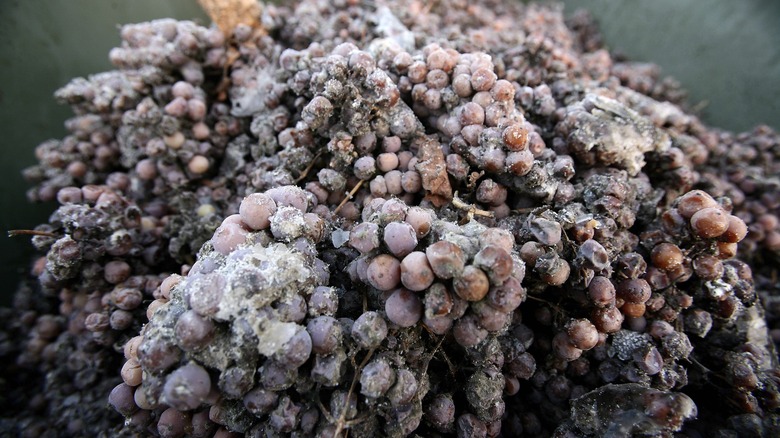What Beginners Should Know When Choosing A Dessert Wine, According To A Sommelier
If you've ever reached the end of a delicious meal and decided you want something sweet but are not in the mood for a whole dessert — look no further than a glass of dessert wine. Instead of pairing a regular wine with dessert, dessert wine gives you the best of both worlds. But not all dessert wines are the same, nor are they created equally. So, how do you choose the right one for you? It's a good idea to take advice from Doreen Winkler, a consulting sommelier who has curated many wine lists for high-profile restaurants worldwide, including many with Michelin stars.
Winkler's criterion for choosing a dessert wine as a beginner? "The level of desired sweetness," she told Daily Meal, "Some dessert wines are quite light like a Moscato d'Asti, but the range can go to very syrupy sweet like sauternes or Tokaj and fortified like port or Madeira."
So, it's important to know how to ask for the right kind of dessert wine. There's some language that newbies to the world of dessert wine should get familiar with to best communicate what they're looking for.
The categories of dessert wines
"Most dessert wines can be categorized into five styles," Doreen Winkler said. She lists sparkling, light and sweet, rich and sweet, sweet red and fortified among the options.
Sparkling dessert wine would be something like a Moscato d'Asti. This particular wine is made with muscat grapes, and its flavor is stone-fruit sweet while exuding citrus aromas, often with a hint of sage. Beaumes de Venise is a good example of a light and sweet still wine and is higher in alcohol than Moscato d'Asti, as it's made with a small addition of 100-proof grape alcohol. A Beaumes de Venise contains tropical notes, but once you bring it to bottle condition, the flavor will develop a raisin-esque aroma with aging.
Rich and sweet dessert wines like ice wines are made from vine-frozen grapes, concentrating their juice's flavor and sugars. Ice wines are produced with all kinds of grape varieties and can range from rich red fruit to sweet stone fruit profiles. Sweet red dessert wines like bayuls are much fuller and earthy. Lastly, you have fortified dessert wines, like port. Port is typically made with brandy, which contributes to its sweetness as brandy retains much of the natural sugars in the grapes. Fortified wines might be the most common dessert wines, with most restaurant wine lists typically offering at least one.
Other tips for beginners
As with everything one eats and drinks, it's hard to identify the best dessert wines, as it comes down to personal preference. You might have to kiss a few frogs before you find the sweet wines that suit you best — but again, take Doreen Winkler's advice: "Restaurants often offer dessert wines by the glass so it's easy to try a few to learn what style or styles you like," she counsels.
Before investing in a bottle of dessert wine, it would be best to learn what you like by ordering a glass of wine that seems appealing.
What should you expect to pay for a whole bottle of dessert wine? According to Winkler, "Whatever you are comfortable with, I'd say $25-100 for a special bottle."
As with many wines, dessert wines can get pricey — but you certainly don't need to spend a ton to get an excellent bottle. If you have a little bit of knowledge (and a whole lot of curiosity), you can surely find your favorite dessert wine.


